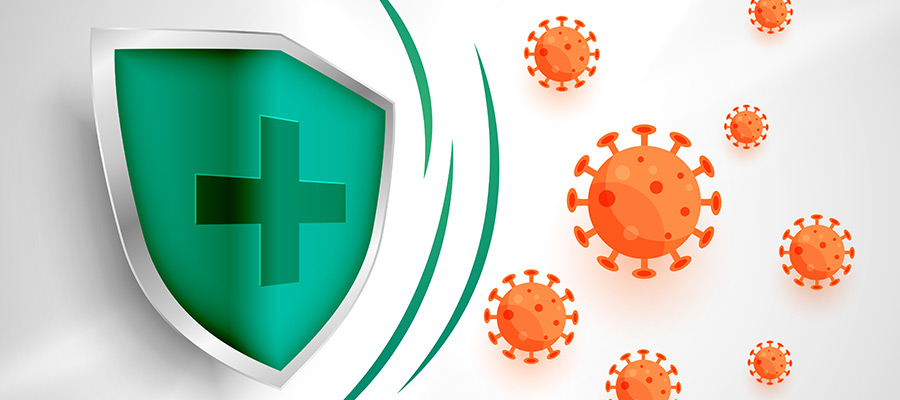Antiviral agents for use on inanimate surfaces have been the subject of research and commercial activities since the 1950s.
Within this body of work, the targets for inactivation have been hypothesized. Viruses are made up of a lipoprotein envelope with characteristics of a typical unit membrane, a proteinaceous capsid, and the RNA or DNA genetic material. These structures and their chemical make up offer targets for antiviral agents. The generally accepted hypothesis on mechanisms of inactivation is based on whether viruses are lipophilic (enveloped viruses such as herpes simplex) or hydrophilic (naked or non-enveloped viruses such as poliovirus).
The active ingredients of the AEM 5700/5772 Antimicrobial have been tested in solution and on the treated surfaces against a small range of viruses.
Herpes Simplex
A series of tests were run at Hill Top Research, Cincinnati, Ohio using a 1% solution of AEM 5700. The test method used was designed for disinfectant products used on an inanimate environmental surface for compliance with US EPA Pesticide Assessment Guidelines, Subdivision G: Product Performance, November 1982, Viricidal activity was shown against Herpes simplex type 1, an enveloped virus).
Poliovirus Type 2
In a static test run by Southern Research Institute, Birmingham, Alabama, surfaces treated with the active ingredient of AEM 5700 showed viricidal activity against Poliovirus type 1 (Strain MEF-1) (a non-enveloped RNA enterovirus).
Bacteriophage T2 & Herpes Simplex Type 1
In a series of experiments and papers I-FU (Eric) Tsao and Henry Y. Wang of the University of Michigan, Ann Arbor, Michigan tested the antiviral activity of AEM 5700 treated alginate beads in a flow-through filtration system. Antiviral activity against bacteriophage T2 and herpes simplex virus type (HSV-1) (an enveloped animal virus was shown both in the presence and absence of proteins in the test solutions.
Standard Quats
Numerous papers have been written on the antiviral activity of standard quaternary ammonium compounds both in solution and when immobilized on inert supports. These papers show inactivation of the lipid-containing virus, some non-lipid viruses, such as piconaviruses.
Conclusions
AEM 5700 solutions and AEM 5700 treated surfaces show positive antiviral activity against a range of viral types. These results are encouraging regarding the utility of this treatment at reducing doses of viruses in a variety of applications.
Interest in the potential activity of AEM 5700 solution on treated surfaces against specific viruses must be pursued with specific tests.

